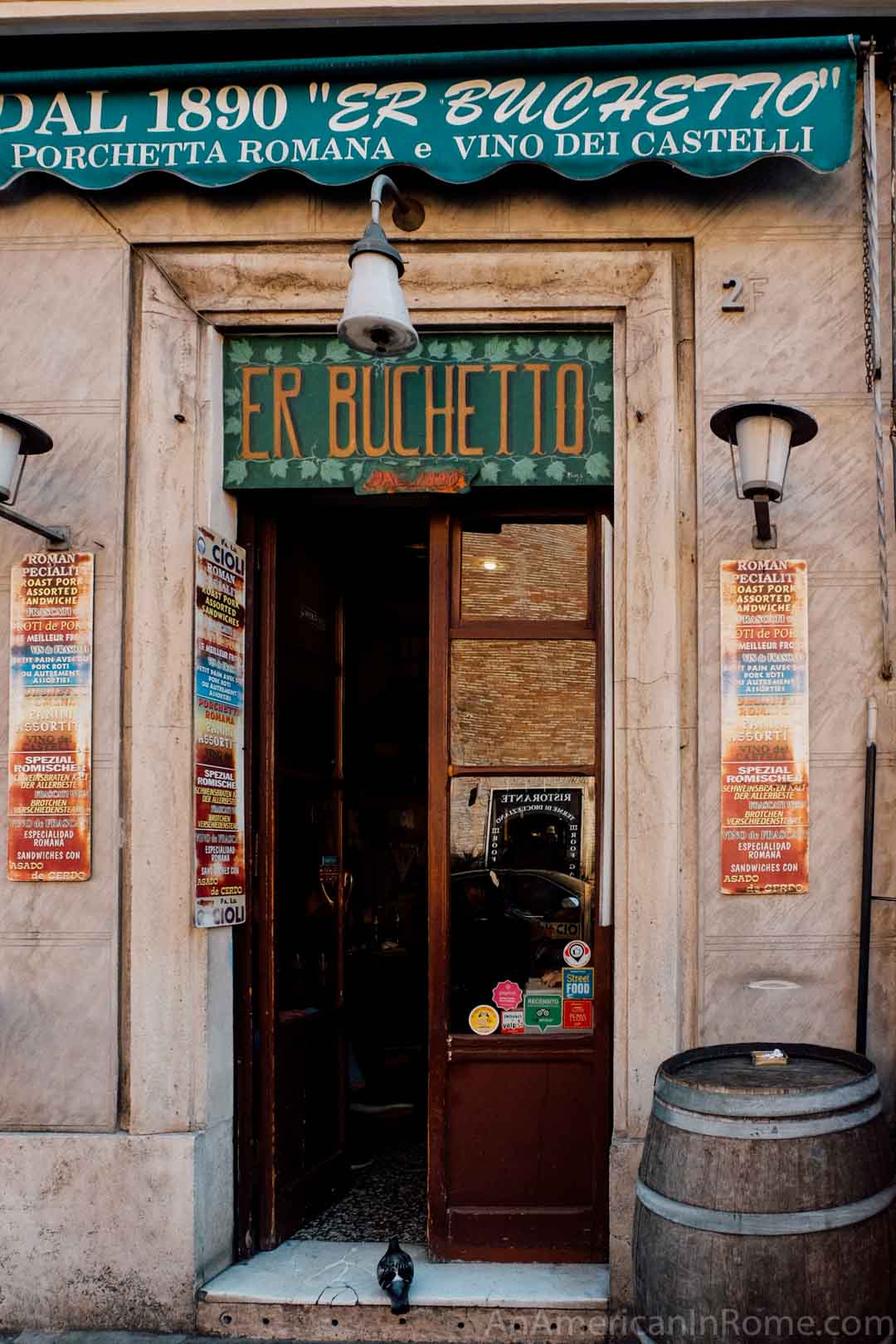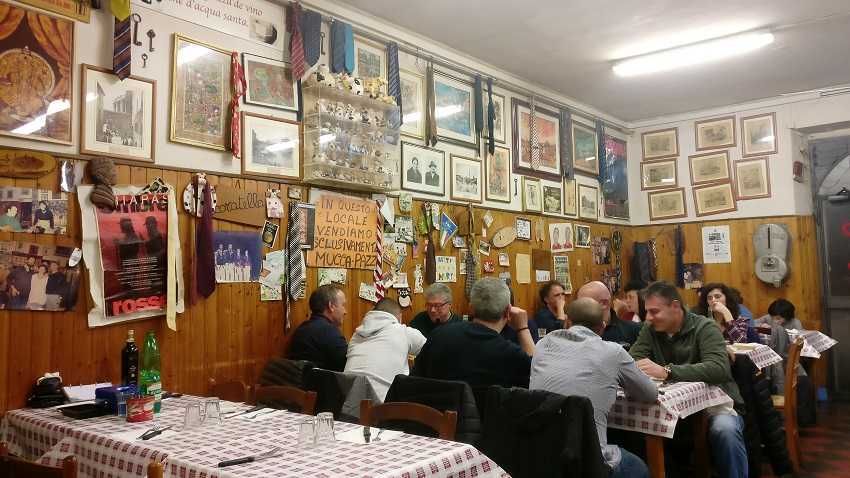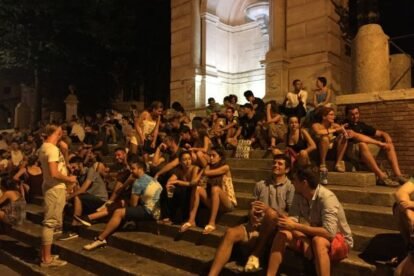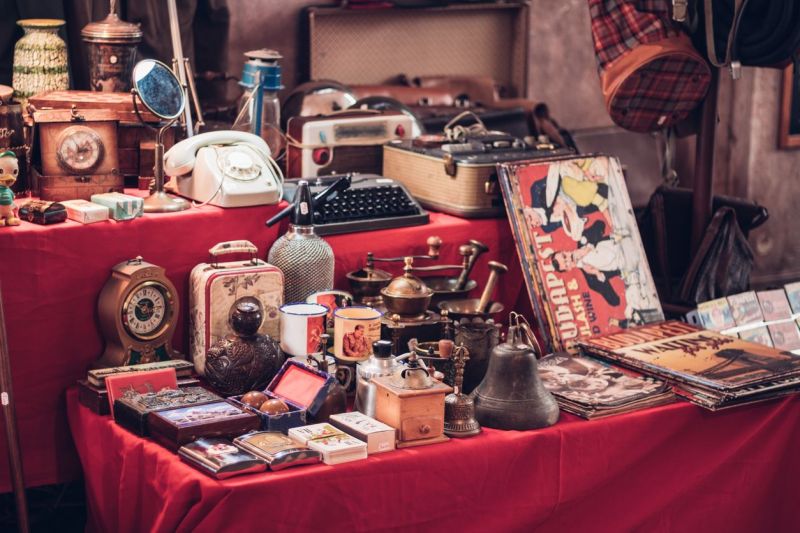Rome, a short introduction
Roma Centro
A small street with a lot of craft shops and art galleries.
AKA the typewriter, for the locals. Difficult to miss, it is just in the middle between Piazza del Popolo and Colosseo. Look laugh and run away.

A little place, as it was in the good old days. The must is a “panino con porchetta”, but also cheeses and pickles (artichokes and aubergines a delicacy) and un mezzo litro of red wine.
The place is so small that it is difficult to get a seat at the tables.
A bit of history: the place has been run by the same family for generation. In my first visit there was the old owner, in my last the son had taken over, but the atmosphere was the same.
Pigneto
live music restaurant

Once upon a time this little restaurant was an institution for a relaxed and down to earth experience.
Forget bon-ton, forget privacy, it is at the limit of the rude (I was scolded once because I dared to start eating my pasta in the wrong order, and it was the cook coming from the kitchen – just to be safe, first the red, than the white). One of the few place where you can find horse meat, and if you are lucky, pajata.
And sometimes you can find street musicians passing through the tables with Guantanamera, Hasta Siempre Comandante and possibly all the Inti Illimani repertoire.
It is one of that place that either you love it or you hate it.
it is at walking distance from Pigneto.
San Lorenzo
Near the University, lot of students, anarchists and communists (at least when I used to roam these streets) make this area alive.
Grab a doner or a pizza to go, stop in one of the small cheap bars around or explore the little clubs in hidden corner (they will likely sell you a year subscription to get in – usually around 5 euro).
Careful, it’s hunting territory for right wing losers. Sometime the situation could become quite hot.
One of the best options for eating in San Lorenzo. Small, friendly and not so far from action.
My usual bar when in San Lorenzo. They used to have a few nice beers, on tap and bottled.
Good to spend the night away, and have a late snack (burgers), otherwise the pizza place in front provide the calories for more beers.
Trastevere
Once this was one poor neighbourough in the heart of Rome, but gentrification hit it quite hard.
Long gone are the small bars and cheat restaurants, now it is more hip and gastro food.
Still it is worth a visit and a night stroll. Ice cream if the weather allows, or a shot of chocolate at Libri, Cioccolata e Vino, and walking around the small streets of old Rome.

In the night people sit on the stairs in Piazza Trilussa, smoking, talking, watching and waiting to decide where to go next.
Been here once, by chance. The waiter had the class of a low rate movie bouncer and dirty hands, but the place offers honest and traditional food (but I did not dare to order pizza). For sure a breath of air after all the tourist infested eateries around.
Another (in)famous place in Rome. Here rudeness is the house’s brand. Parolaccia means dirty word and this will be the leit-motif of the night if you decide to give it a try. Too boor for me, I cite just because.
Porta Portese

If Berlin has Mauerpark Rome has Porta Portese, from 7am on Sundays. Keep your wallet in a safe place and get into the crowd. You will never know what you can find here.
Miscellaneus
Food
Because Rome is not (just) pizza.
- Rigatoni con la Pajata
In a famous Italian movie, to a tourist asking what she was eating, her Roman friend replied “Merda” (shit)
“well, it is a bit rough, but I wouldn’t say it is shit”
“no no, you do not understand, it is not shitty, it is literally shit”.
So, pajata is the intestine of a young calf, fed just with milk, with the undigested milk left inside and let ferment naturally. If you feel brave.
(bragging: in the South we have something similar, but done with the intestine of adult horse – no milk there, just… straw)
- Cacio e pepe
cheese and pepper, it is (one of) the king of the Roman cuisine. You have to try once, then repeat
- Gricia Carbonara e Amatriciana
same same but different, Gricia is the base, add eggs, you have Carbonara, add tomatoes and onions, you have Amatriciana. Of course the story does not stop here, and there are variants, and experiments, and real national wars on these three dishes.
Legend says that Carbonara is related to Berliner Curry Wurst – both are done with what was available at the time the American and English soldiers arrived during the war, bacon and dried eggs for the first, curry for the second, combined with local ingredients. But this is a legend I made up when I was bored in Berlin.
- Trippa
tripe, goat’s or sheep’s stomach, cooked with onions, tomatoes and a bit of chili. To fortify and warm up in winter.
Soundtrack
A very short collection of Italian songs about Rome in Spotify